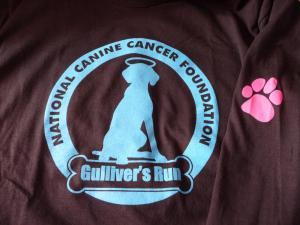Mammary Tumors in Cats and Dogs
- posted: Nov. 06, 2016
Cancer Series: November is Cancer Awareness Month for Pets
Mammary Tumors
 October was breast cancer awareness month, but did you know that dogs and cats can get breast or mammary cancer too? This blog will discuss some risk factor, warning signs and other information about feline and canine mammary tumors.
October was breast cancer awareness month, but did you know that dogs and cats can get breast or mammary cancer too? This blog will discuss some risk factor, warning signs and other information about feline and canine mammary tumors.
Mammary tumors in dogs occur most frequently in unspayed females or dogs spayed late in life who are over the age of nine. Sex hormones like estrogen and progesterone can influence tumor growth in mammary tissue. If spayed as a pup before undergoing a first heat cycle, a dog will virtually never develop mammary cancer. There is a 7% chance of mammary cancer in dogs who have one heat cycle before being spayed. As many as one in four for unspayed females will develop breast tumors. Dogs who are overweight may also have an increased risk. It is one of the most common types of cancer in intact female dogs and only rarely found in males.
About half of the tumors found will be cancerous and half will be benign. There are several variations of malignant tumors and the tumor type can only be determined by biopsy of the tissue.
Dogs have a chain of mammary glands running down either side of the chest and belly. Any lumps felt within this tissue are abnormal. One may find pea-sized hard lumps or large, aggressive ulcerated masses. Multiple lumps of varying types may be present and dogs may have a mixture of both benign and cancerous masses. Any lumps that are found should be checked and surgically removed. Spaying your dog at the time the tumors are removed is recommended as it may increase survival time and serves to remove the influence of hormones on tumors with hormone receptors, though it is unclear whether spaying actually reduces the chance of future tumors forming.
Small, localized masses that are removed quickly generally lead to a good prognosis and survival time after surgery. The presence of larger tumors or evidence of tumor spread to lungs or lymph nodes have shorter survival times. Occasionally, radiation or chemotherapy may be recommended.
Mammary tumors in cats are malignant 90% of the time. Again, cats who are over the age of ten and who are unspayed or who were spayed after two years of age have the highest incidence of mammary tumors. Siamese cats may have a higher incidence than other breeds. Kittens spayed before the age of six to twelve months have an extremely low incidence of developing mammary tumors.
Mammary cancer in cats tends to rapidly spread to surrounding lymph nodes and can spread to the lungs. The tumors tend to grow more quickly than in dogs and frequently ulcerate and become infected or necrotic on the surface of the skin. Very small tumors less than 0.8inches that are removed quickly can have a good prognosis and survival time of about 4.5 years. Cats with larger tumors survive an average of about 6 months after surgery. Radical surgical removal of the entire mammary chain may be necessary.
Both cats and dogs should be screened for tumor spread with x-rays of the chest and possibly other imaging tests and bloodwork prior to surgery.
As you can see, spaying puppies and kittens is not recommended solely for population control, but can have health benefits including preventing mammary cancer. It is never too late to have your female pet spayed, but, for pets who are not spayed or who were spayed after the age of two, checking for lumps in the mammary tissue is very important, and, any lumps found should be immediately evaluated by your veterinarian.
This blog brought to you by the Patton Veterinary Hospital serving Red Lion, York and the surrounding communities.
Sources: Prognosis, treatment of canine mammary tumors, Jun 1, 2008, Johnny Hoskins, DVM, PhD, DACVIM for DVM360 Magazine at www.veterinarynews.dvm360.com
Mammary Cancer in Cats July 21, 2016 by Wendy C. Brooks, DVM, DipABVP at www.veterinarypartner.com
Location
Patton Veterinary Hospital
425 E Broadway
Red Lion, PA 17356
